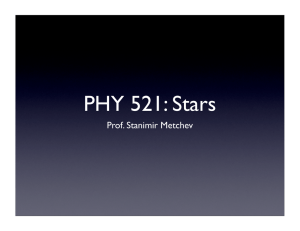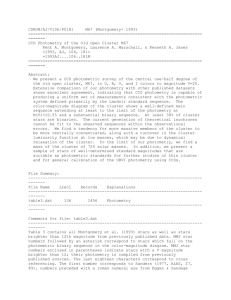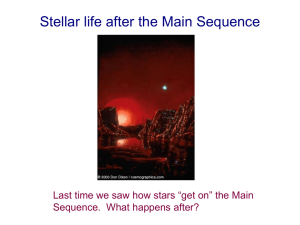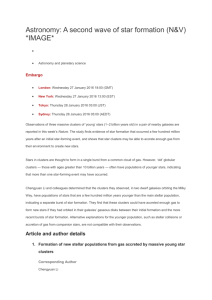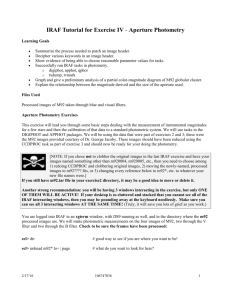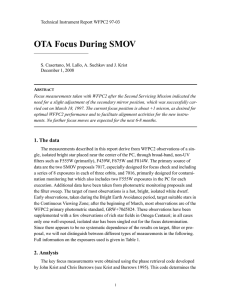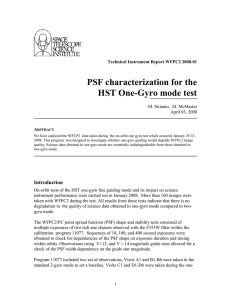table
advertisement
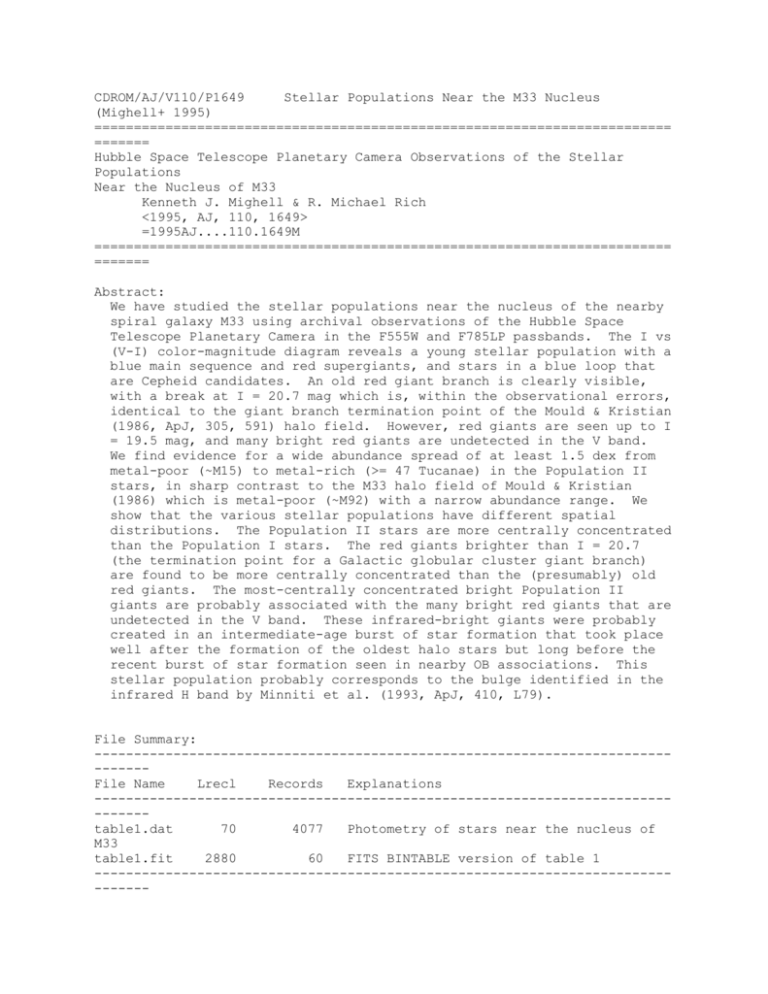
CDROM/AJ/V110/P1649 Stellar Populations Near the M33 Nucleus (Mighell+ 1995) ========================================================================= ======= Hubble Space Telescope Planetary Camera Observations of the Stellar Populations Near the Nucleus of M33 Kenneth J. Mighell & R. Michael Rich <1995, AJ, 110, 1649> =1995AJ....110.1649M ========================================================================= ======= Abstract: We have studied the stellar populations near the nucleus of the nearby spiral galaxy M33 using archival observations of the Hubble Space Telescope Planetary Camera in the F555W and F785LP passbands. The I vs (V-I) color-magnitude diagram reveals a young stellar population with a blue main sequence and red supergiants, and stars in a blue loop that are Cepheid candidates. An old red giant branch is clearly visible, with a break at I = 20.7 mag which is, within the observational errors, identical to the giant branch termination point of the Mould & Kristian (1986, ApJ, 305, 591) halo field. However, red giants are seen up to I = 19.5 mag, and many bright red giants are undetected in the V band. We find evidence for a wide abundance spread of at least 1.5 dex from metal-poor (~M15) to metal-rich (>= 47 Tucanae) in the Population II stars, in sharp contrast to the M33 halo field of Mould & Kristian (1986) which is metal-poor (~M92) with a narrow abundance range. We show that the various stellar populations have different spatial distributions. The Population II stars are more centrally concentrated than the Population I stars. The red giants brighter than I = 20.7 (the termination point for a Galactic globular cluster giant branch) are found to be more centrally concentrated than the (presumably) old red giants. The most-centrally concentrated bright Population II giants are probably associated with the many bright red giants that are undetected in the V band. These infrared-bright giants were probably created in an intermediate-age burst of star formation that took place well after the formation of the oldest halo stars but long before the recent burst of star formation seen in nearby OB associations. This stellar population probably corresponds to the bulge identified in the infrared H band by Minniti et al. (1993, ApJ, 410, L79). File Summary: ------------------------------------------------------------------------------File Name Lrecl Records Explanations ------------------------------------------------------------------------------table1.dat 70 4077 Photometry of stars near the nucleus of M33 table1.fit 2880 60 FITS BINTABLE version of table 1 ------------------------------------------------------------------------------- Byte-by-byte Description of file: table1.dat ------------------------------------------------------------------------------Bytes Format Units Label Explanations ------------------------------------------------------------------------------1-10 I10 --ID *Coded indentification 11-18 F8.2 mag F785LP F785LP (i) magnitude 19-24 F6.2 mag e_F785LP F785LP photometric error 25-32 F8.2 mag F555W F555W (v) magnitude 33-38 F6.2 mag e_F555W F555W photometric error 39-45 F7.2 mag I []?=99.99 I magnitude 46-51 F6.2 mag V-I V-I color 52-59 F8.2 arcsec dRA *R.A. (J2000) offset from M33 nucleus 60-67 F8.2 arcsec dDE *Dec. (J2000) offset from M33 nucleus 68-70 I3 --Class *Photometric measurement class ------------------------------------------------------------------------------Notes for file: table1.dat ------------------------------------------------------------------------------ID: The left-most digit of the ID gives the PC chip number where the star may be found (5, 6, 7, or 8). The right-most 4 digits of the ID gives the x coordinate of the star multiplied by 10. The remaining 4 digits gives the y coordinate of the star multiplied by 10. All positions are given with respect to the W0M00104T dataset. For example, the first star in Table 1 has an ID of 505142912 which indicates that it has the (x,y) position of (291.2, 51.4) on the PC5 CCD of the W0M00104T dataset. dRA, dDE: Offsets in arcseconds from the nucleus of M33 (ID = 634043615) for the standard HST epoch of J2000.0. Class: 1 = v and i photometry (2532 stars) 2 = only i photometry (1028 stars) 3 = only v photometry (517 stars) ------------------------------------------------------------------------------========================================================================= ======= (End) Lee Brotzman [ADS] 31Oct-1995

